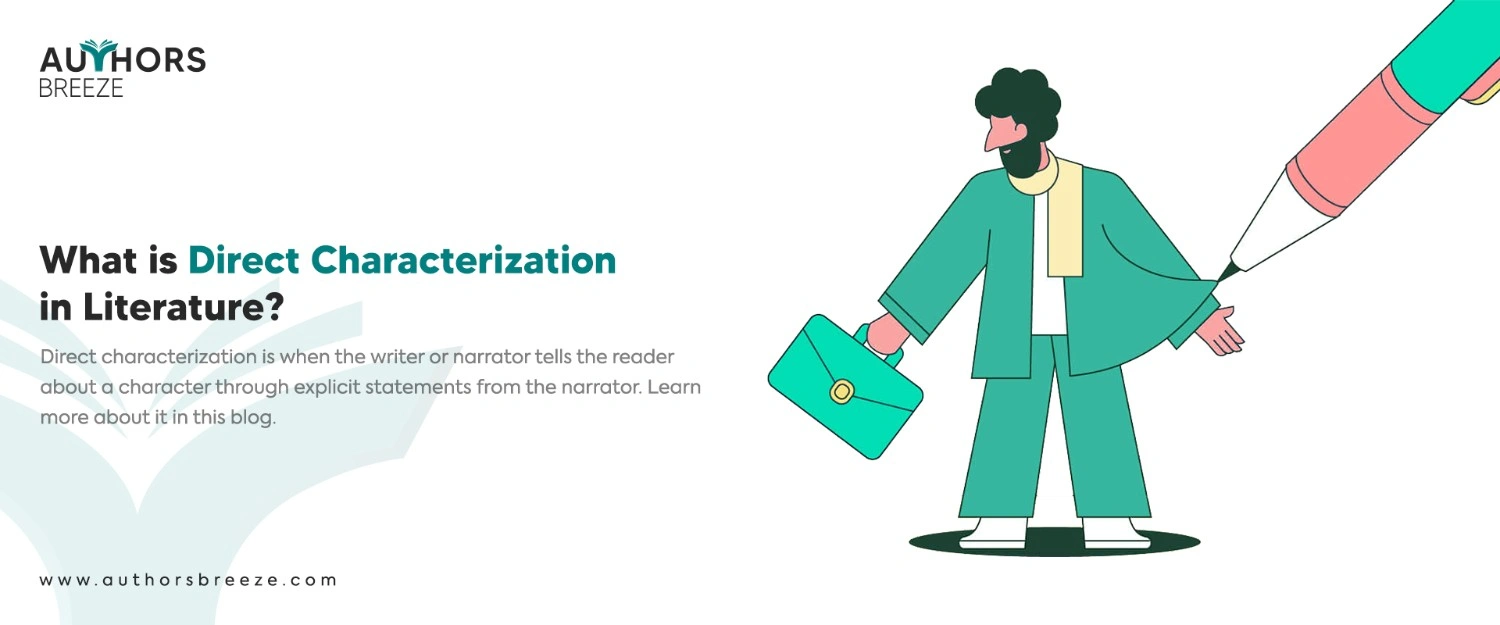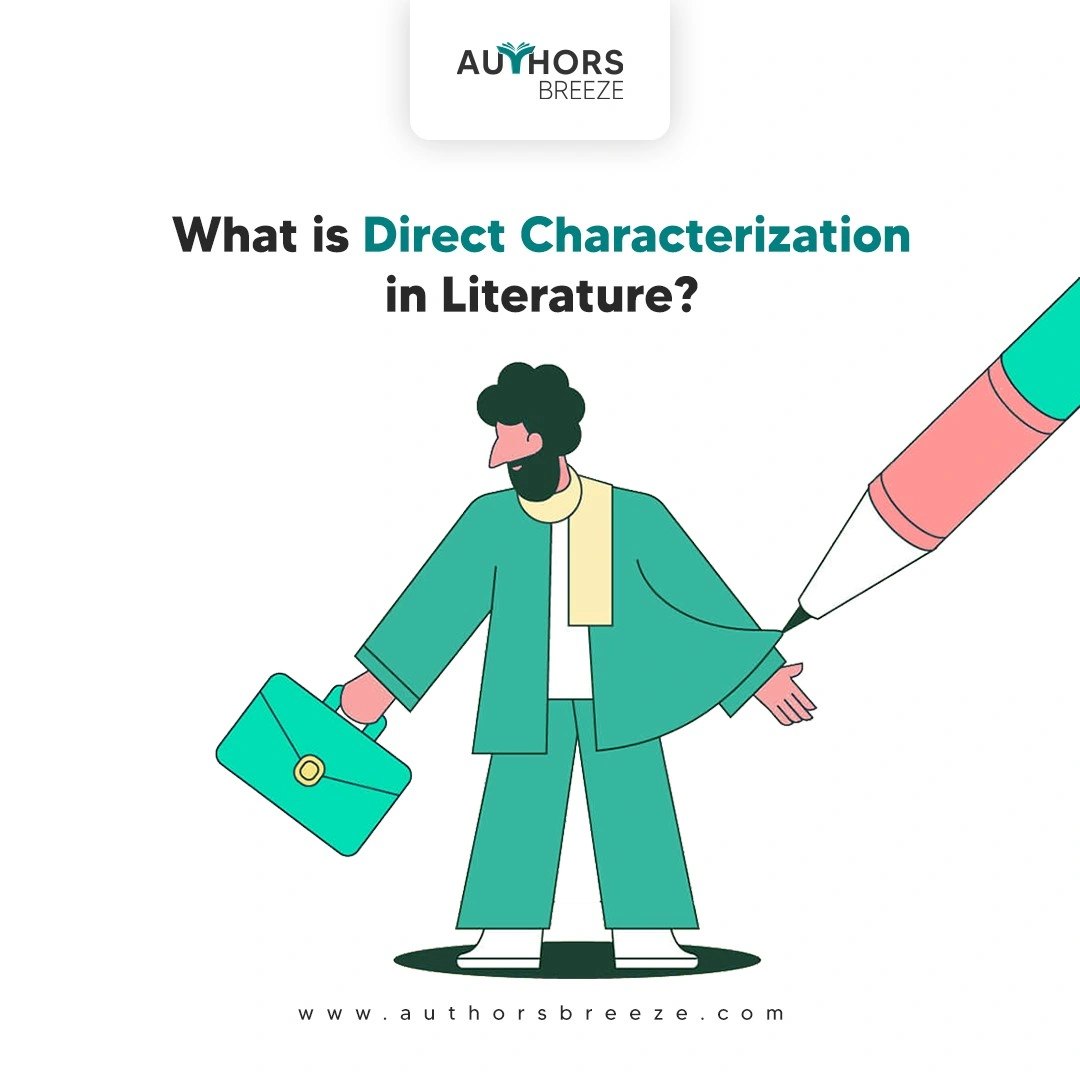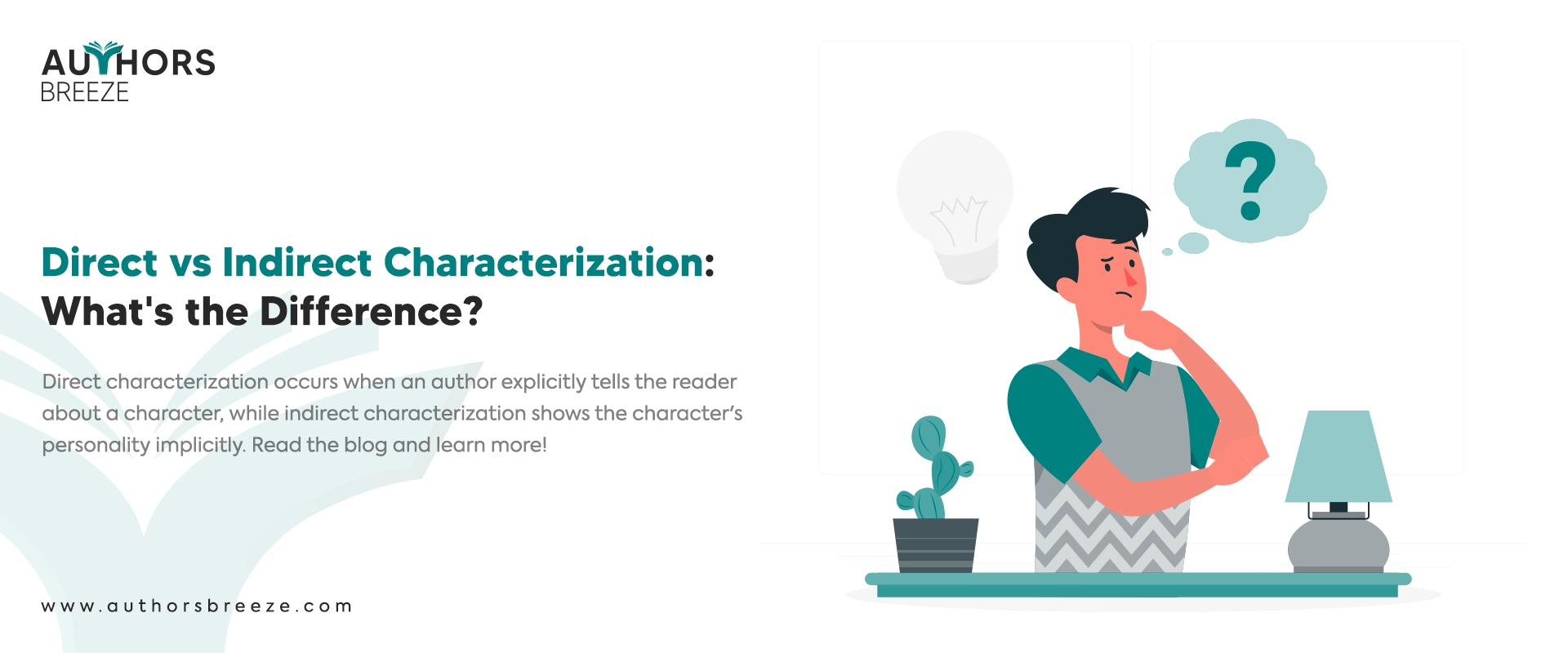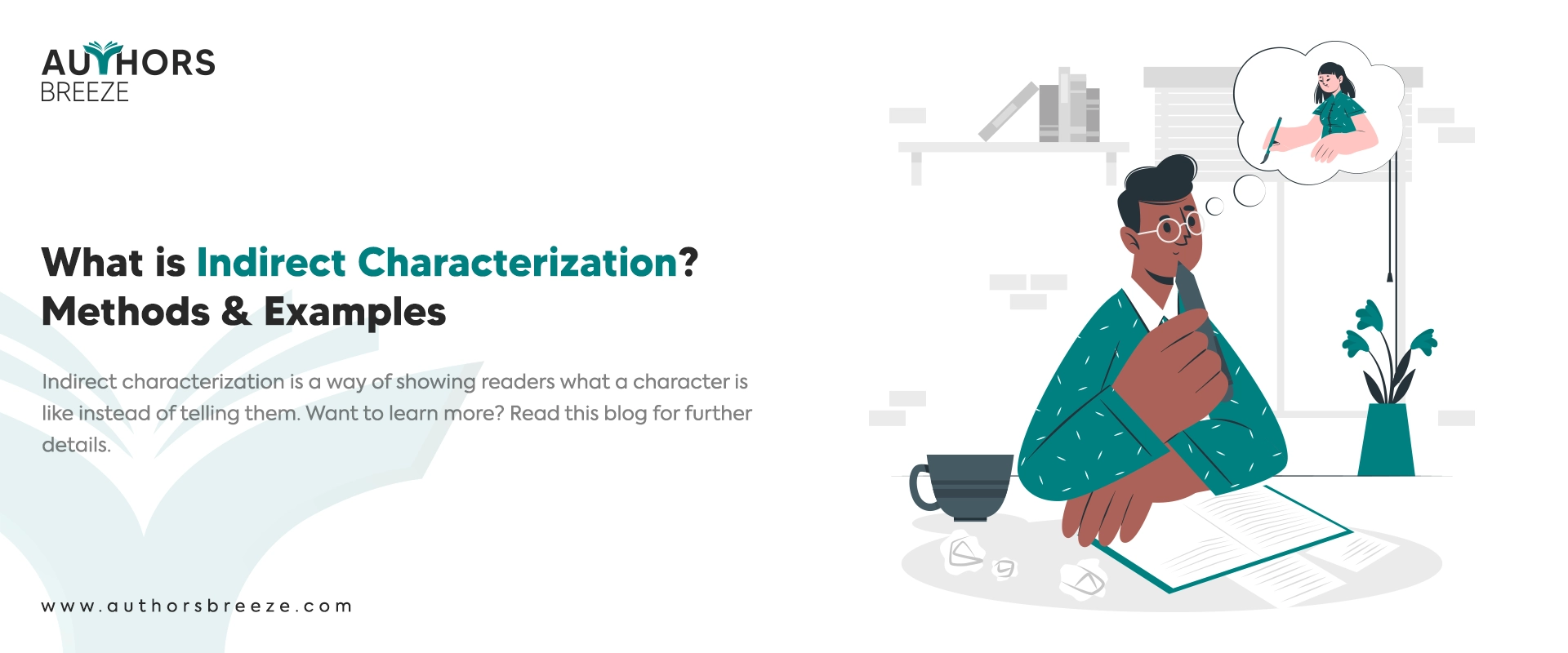Don’t Have Time To Read? Listen To What is Direct Characterization in Literature Instead!
Key Takeaways: What is Direct Characterization in Literature?
Are you new to the literary world and want to learn how to effectively introduce characters with direct characterization? Or are you a literature student aiming to better understand character development and literary techniques? Then, this guide is for you. It is time to read and learn from the greats.
- Direct characterization is when the author directly tells you about a character’s traits, personality, or motivations.
- It’s like the author giving you a label or description upfront.
- For example: “She was kind and always smiled.” or “Tom was a brave and courageous knight.”
Tell Your Readers About Your Characters
Do you struggle with characterization? If so, let our seasoned ghostwriters describe your characters to readers with responsibility.
Introduction
You may have heard of “Show, don’t tell.” It can be terrible writing advice you can get. However, effective storytelling often requires a balance. While sometimes overlooked, direct characterization provides a concise and impactful way to introduce key personality traits and motivations, allowing writers to focus on “showing” in other crucial areas of their narrative.
One way an author uses direct characterization is by telling the reader about the character through what the narrator says. For example:
“The narrator might describe a character as ‘kind,’ ‘selfish,’ or ‘ambitious.”
In this blog post, we’ll explore this valuable tool that allows writers to efficiently and effectively convey crucial information about their characters. So, let’s begin.
What is Characterization?
If we have to define characterization, we would say:
“A description of the distinctive nature or features of a person or a fictional character.”
However, in literature, characterization is when an author paints a picture of a character with words. It is how they bring characters to life, making them feel authentic and engaging. They do this by showing us:
1. What the characters look like.
Imagine the writer describing:
- A character’s messy hair
- A mischievous grin
- A worried frown
These details paint a picture in our minds.
2. What the characters say and do.
Every word and action reveals something about a character.
- Do they speak kindly or rudely?
- Are they brave or cowardly?
Their choices and conversations tell us who they are.
3. What the characters think and feel.
Writers can peek inside a character’s mind, sharing their thoughts and emotions.
This helps us understand their motivations and how they see the world.
4. How other characters react to them.
Sometimes, what others say or do about a character tells us even more than what the character says or does themselves.
So, next time you read a story, pay attention to how the writer uses these techniques to bring the characters to life. As a result, you can learn how to use characterization.
Types of Characters
You can categorize or classify characters based on their role, function, or personality traits within a story. These types can be quite diverse and often depend on the genre or narrative structure. Some common types include the following:
- Protagonist – The central character around whom the story revolves.
- Antagonist – The person who opposes the protagonist.
- Supporting Character – Characters who play a major role in the story but are not the main focus.
- Foil Character – A character who contrasts with another character (usually the protagonist) to highlight particular qualities of the other character.
- Morally Grey Character – A character who does not clearly fit into the traditional categories of “good” or “evil.”
- Static Character – A character who remains unchanged throughout the story till the end.
- Dynamic Character – Someone who undergoes significant personal growth or change.
- Flat Character – A figure with limited personality traits or depth.
- Round Character – A complex character with multiple facets and motivations.
Also Read: Round vs Flat Characters: Differences and Features
Character Archetypes
Character Archetypes, on the other hand, are universal patterns or models of characters that have been repeated throughout history and across cultures. They represent fundamental human experiences and desires and often serve as symbolic representations of certain ideas or themes. Some well-known archetypes include the following:
- The Hero – A courageous individual who overcomes challenges to achieve a noble goal.
- The Villain – A malevolent character who opposes the hero.
- The Mentor – A wise and experienced figure who guides the hero.
- The Trickster – A mischievous character who challenges social norms and conventions.
- The Innocent – A naive and pure character who embodies goodness.
- The Lover – A passionate and romantic character who seeks love and connection.
Types of Characters vs. Character Archetypes: Key Differences
Specificity
Types of characters are more specific and often tied to a particular story or genre. On the other hand, archetypes are broader and more universal.
Development
Types of characters can be static or dynamic, while archetypes often remain consistent throughout different stories.
Symbolism
Archetypes often carry symbolic meaning and represent universal human experiences, whereas types of characters may not have such deep symbolic significance.
Types of characters are like specific breeds of dogs.
For example:
“Labrador Retriever and German Shepherd”
Character archetypes are like the general concept of “dog.”
For instance:
“A domesticated canine companion.”
A specific character can belong to a particular type. However, they can also embody elements of multiple archetypes.
For example:
“A protagonist might be a dynamic hero who also exhibits traits of the innocent or the lover.”
When writers want to tell a good story, they need to figure out the best way to portray the types and archetypes of characters. There are two techniques to describe characters:
- Direct Characterization
- Indirect Characterization
What is Direct Characterization?
So, what does direct characterization mean? If we have to define it, we can say:
“It is where a storyteller directly tells you about a character.”
For example:
Saying, “She was kind and always smiled.”
That is a direct characterization!
It is like the author gives you a clear, upfront description of the personality or traits of a character.
You may also see people using other wording for direct characterization. One of the popular synonyms for direct characterization is explicit characterization. Other synonyms include the following:
- obvious characterization
- clear characterization
- straightforward characterization
- transparent characterization
So do not get confused b/w them.
The simple definition or meaning of direct characterization is:
“A literary device that authors use to provide readers with clear, definitive details about a character.”
Why is Direct Characterization Important?
Direct characterization is a shortcut that authors use to tell them straight up:
- what a character is like,
- their personality,
- what they want,
- and why they do things.
It is important because it helps readers understand the characters quickly and easily without having to guess their thoughts and feelings. So you can visualize them in your head and enjoy the story even more.
Key Insight:
“At the beginning of a story, it can quickly give you key details that will affect how the story unfolds.”
What are the Methods of Direct Characterization?
Authorial Telling
The author directly states the traits or qualities of a character.
For example:
“John was a kind and compassionate man.”
Character’s Own Words
The character directly describes themselves or their feelings.
For instance:
“I am an introvert and often struggle in social situations.”
Opinions of Other Characters
Other characters in the story describe the character being characterized.
For example:
“Mary said that John was the most generous person she knew.”
Labels or Titles
For instance:
“The town drunkard,” “The village gossip,” “The kindly old professor”
What are the Types of Direct Characterization?
There is no single, universally accepted list of “types” when it comes to direct characterization. However, there are a few ways you can categorize the methods:
- By sources (such as author narration, the character’s own words, etc.)
- By focus (such as physical description, personality traits, etc.)
When to Use Direct Characterization?
Think of direct characterization like a label on a bottle. It tells you exactly what’s inside. You can use it:
When Introducing Characters
When you first meet a character, direct characterization can quickly paint a picture in the reader’s mind.
“Sarah was a tall, elegant woman with fiery red hair and a kind smile.”
Boom! You know what she looks like and have a sense of her personality.
For Highlighting Key Traits
If a character’s personality is central to the story, direct characterization can emphasize those traits.
“He was known for his unwavering honesty, even when it got him into trouble.”
This lets you know that honesty is a big deal for this character.
To Create a Strong First Impression
First impressions matter! Direct characterization can make a character instantly memorable.
“The old man sat on the park bench, his eyes twinkling with mischief.”
Now you’re intrigued!
Keep in Mind:
While the direct characterization is helpful, too much of it can make readers feel you are lecturing them.
So, it is often more engaging to show the traits of a character through their actions and dialogue (that is indirect characterization!).
How to Use Direct Characterization?
So, how do writers use direct characterization in a story? They utilize it to tell readers exactly what they want them to know about their characters.
Here’s an example:
Direct:
“The old woman was wise and gentle.”
In this sentence, the author directly tells us that the older woman is wise and gentle.
Now, compare it to this:
Indirect:
“The woman listened patiently to the child’s worries, offering comforting words and a warm smile.”
Here, the author shows us the woman is older by showing her wisdom and gentleness through her actions and words. That is called indirect characterization.
While indirect characterization can be more engaging, direct method is helpful, especially when you want to establish a character’s personality or background quickly.
Tips for Direct Characterization
Here are some tips for using direct characterization creatively:
Be Specific
Instead of saying:
“He was a good person.”
Try:
“He had a heart of gold.”
Use Strong Adjectives and Adverbs
Words like “fierce,” “determined,” and “joyfully” can paint a vivid picture of your character.
Don’t Overdo It
Too much direction can make your writing feel heavy-handed. So, use it sparingly and strategically.
Key Tip:
“Combine direct and indirect characterization. This will make your characters more well-rounded and believable.”
Direct Characterization Examples
Let’s look at examples of direct characterization.
In Literature
“The Great Gatsby” by F. Scott Fitzgerald
“In his blue gardens, men and girls came and went like moths among the whisperings and the champagne and the stars.” (Describes Gatsby as wealthy and extravagant)
“Pride and Prejudice” by Jane Austen
“Mr. Darcy was a proud, rich, and handsome man.” (Explicitly states Darcy’s key characteristics)
From Movies
“The Shawshank Redemption”
The narrator, Red, directly states that Andy Dufresne is “a smart fella, the sharpest one I ever knew.”
“The Dark Knight”
Commissioner Gordon directly addresses Batman as “the only good guy in a city of criminals.”
In Books
“Harry Potter and the Sorcerer’s Stone” by J.K. Rowling
“Harry was a thin, gangly boy with unruly black hair and a pair of round glasses perched precariously on his nose.” (Describes Harry’s physical appearance)
“To Kill a Mockingbird” by Harper Lee
“Atticus Finch was the same last year as the year before. You never could tell he was lying.” (Highlights Atticus’s honesty and integrity)
What is Indirect Characterization?
Indirect characterization is when an author shows you how a character acts, speaks, thinks, and feels, and you have to figure out what kind of person they are based on their behavior.
For example:
You are watching a movie. You don’t hear the characters say,
“I’m a shy person.”
Instead:
“You see them tremble when they have to speak in front of others, avoid eye contact, and mumble their words.”
That is an indirect characterization!
It’s like putting together a puzzle to understand the character’s personality.
What is the Difference between Direct Characterization and Indirect Characterization?
Direct characterization is similar to a friend giving you a straightforward description of someone. They might say,
“He’s really kind,”
or
“She’s very shy.”
The author tells you exactly what the character is like.
Indirect characterization is similar to watching someone interact with others and figuring out their personality based on their actions and words. For example:
If someone always offers to help others and speaks gently, you might infer that they are kind.
In a Word:
Direct (Explicit) – The author tells you.
Indirect (Implicit) – You figure it out.
Conclusion
Direct characterization is a valuable tool for writers to introduce characters and emphasize important personality traits quickly. However, you should use it sparingly to avoid making your writing feel too obvious or preachy. Combining direct characterization with indirect methods (showing, not telling) will create more engaging and believable characters.
Learning characterization is just the beginning of your literary journey. In case of any more assistance, Authors Breeze is here for help.
Frequently Asked Questions
When does direct characterization occur?
Direct characterization occurs when the author explicitly describes the characters.
Why do writers use direct characterization?
Writers use this literary device in their stories to leave very little room for confusion or doubt.
Improve Your Ebook with Characterization
Let our ebook writers help you leverage direct characterization to create an unforgettable reading experience for your audience.
